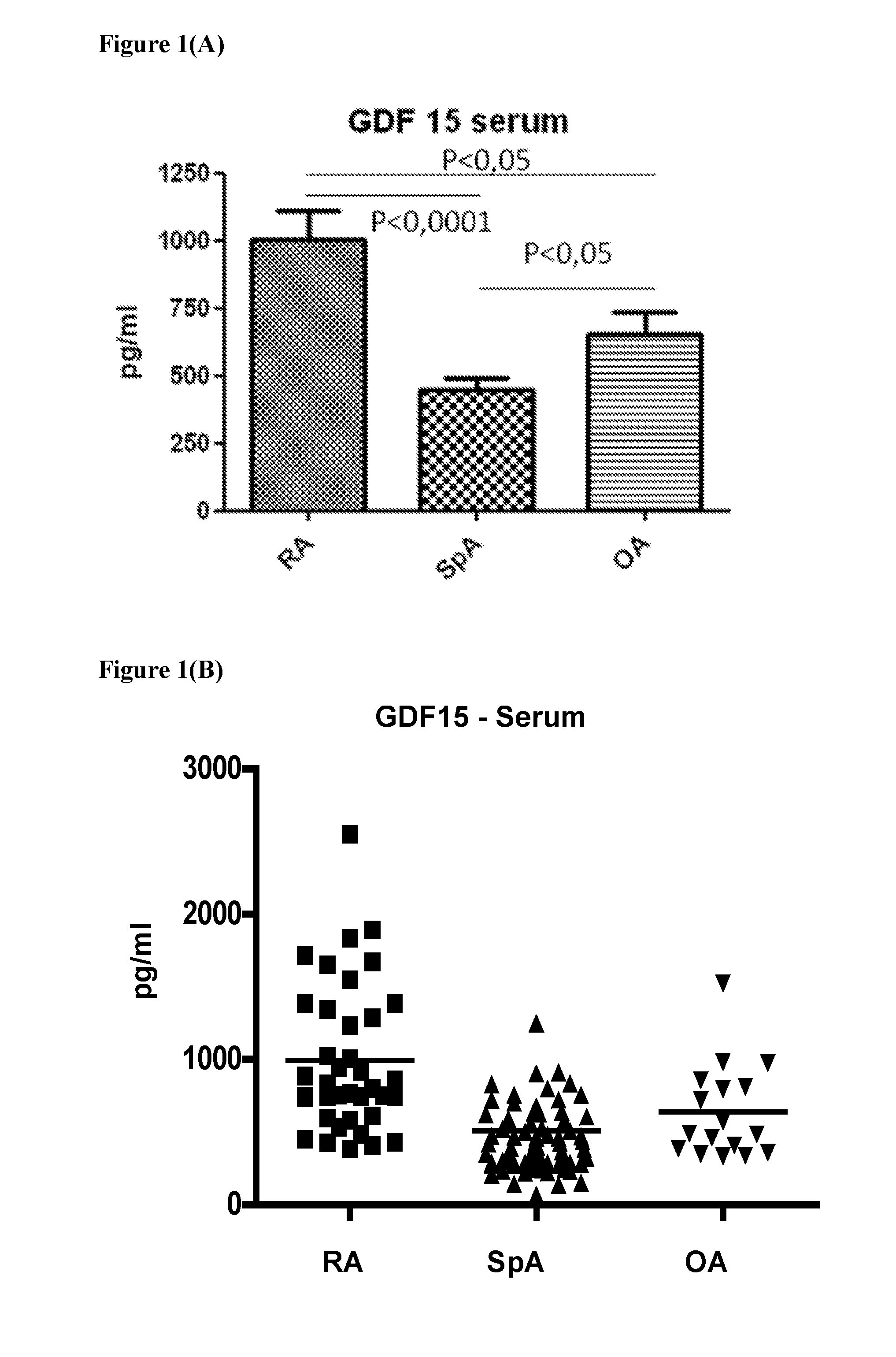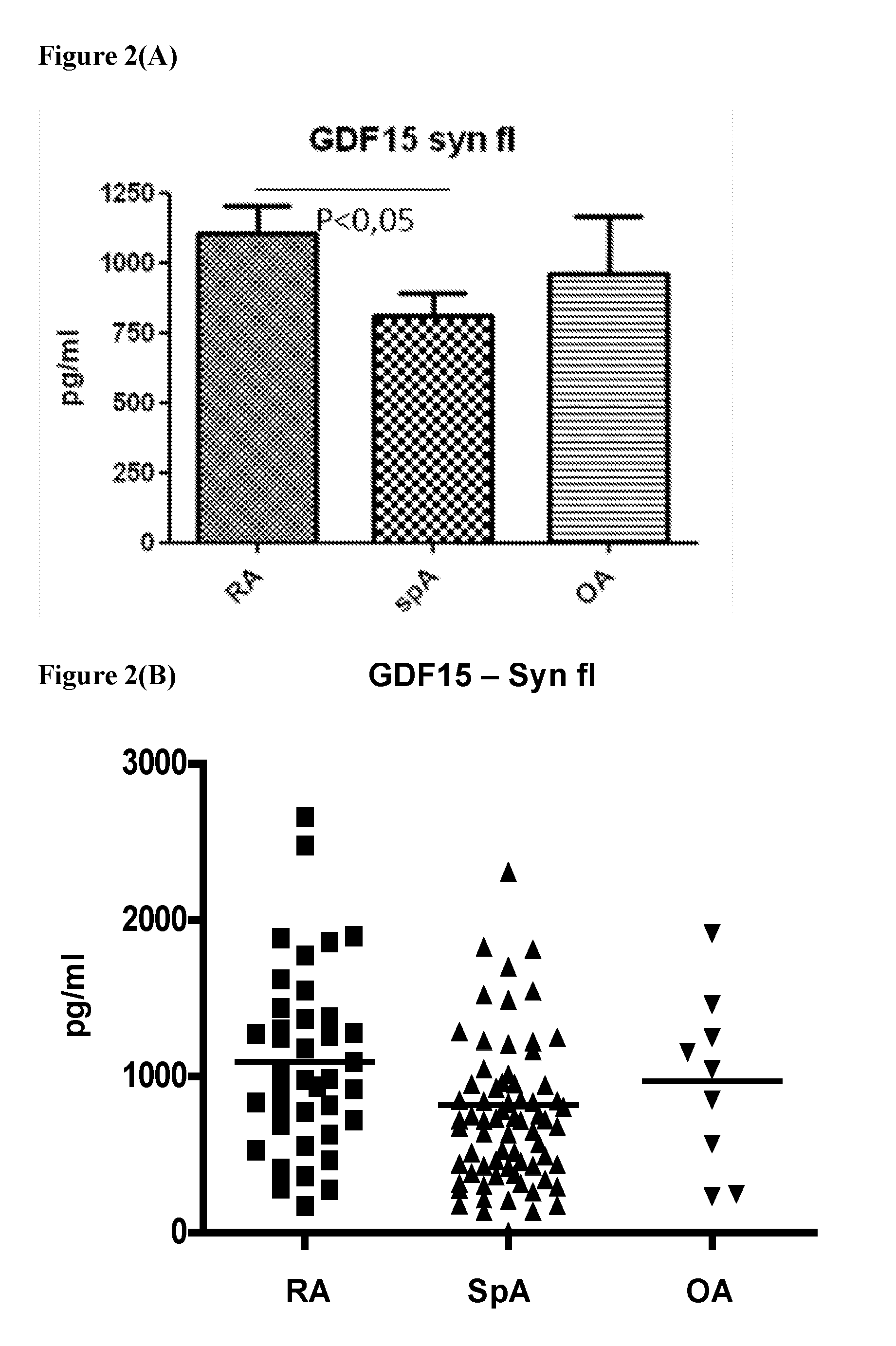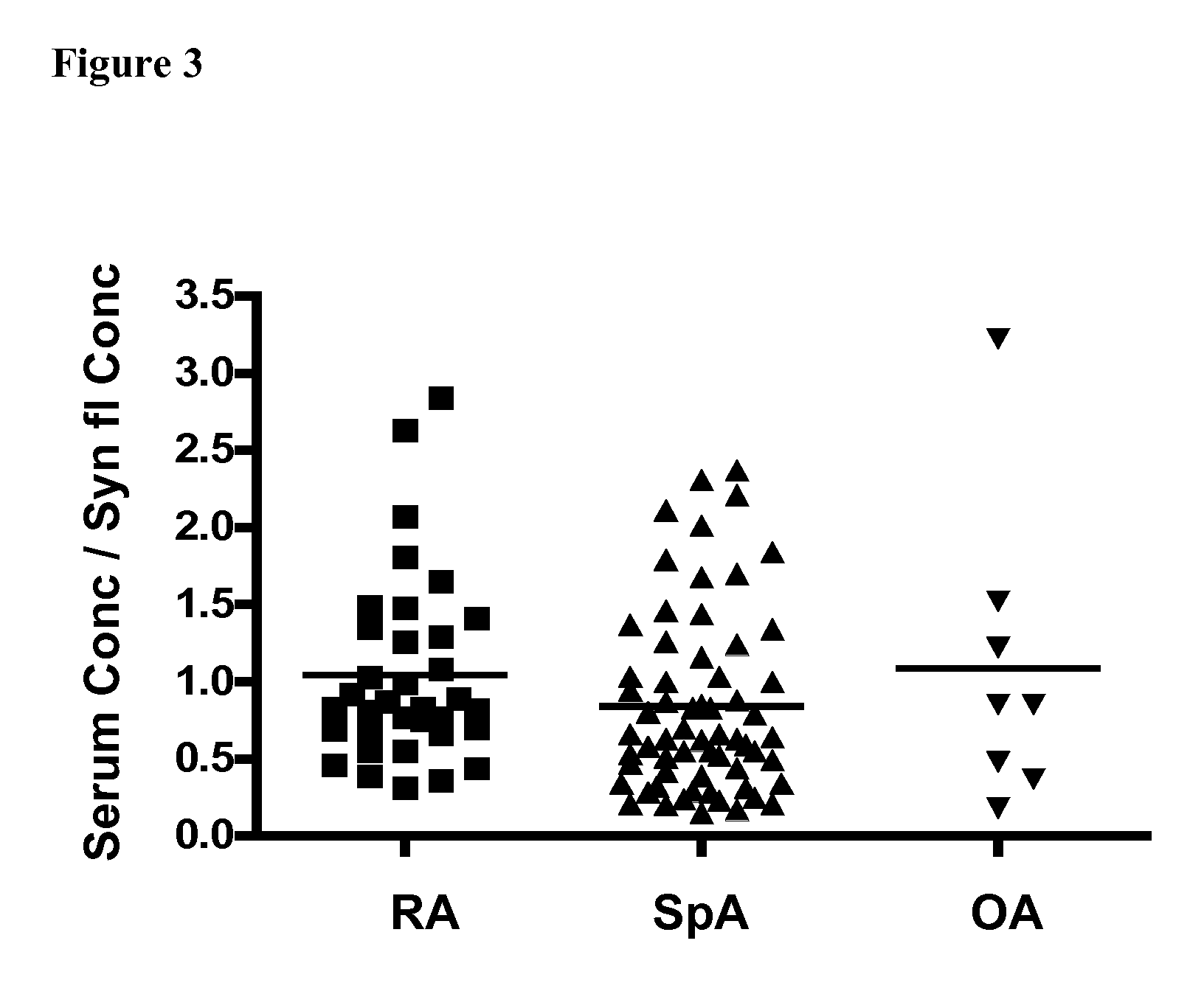GDF15 as a differential marker for spondyloarthropathy
a technology of spondyloarthropathy and differential marker, which is applied in the field of transforming growth factor (tgf), can solve problems such as difficulty in fulfilling diagnostic or classification criteria
- Summary
- Abstract
- Description
- Claims
- Application Information
AI Technical Summary
Benefits of technology
Problems solved by technology
Method used
Image
Examples
example 1
Analysis of GDF15 Concentration in Blood Serum Samples
[0067]Serum samples were obtained from 121 patients. 38 Patients with RA fulfilling the American College of Rheumatology (ACR) criteria (Arnett, F. C., Edworthy, S. M., Bloch, D. A., McShane, D. J., et al., Arthritis Rheum. 1988, 31, 315-24), 67 patients with SpA fulfilling the European Spondyloarthropathy Study Group criteria (Dougados, M., van-der-Linden, S., Juhlin, R., Huitfeldt, B., et al., Arthritis Rheum. 1991, 34, 218-27) and 16 patients with osteoarthritis (OA) fulfilling the ACR criteria (Altman, R., Asch, E., Bloch, D., Bole, G., et al., Arthritis Rheum. 1986, 29, 1039-49) were included in this study. After serum isolation, the samples were immediately frozen until further use. GDF15 concentrations were measured by standard ELISA techniques using the GDF15 ELISA DuoSet (R&D systems, Abingdon, UK) according to the manufacturer's instructions.
example 2
Analysis of GDF15 Concentration in Synovial Fluid Samples
[0068]Synovial fluid samples were obtained from 115 patients undergoing needle arthroscopy of the knee for diagnostic work-up or for therapeutic reasons. 39 Patients with RA fulfilling the American College of Rheumatology (ACR) criteria, 68 patients with SpA fulfilling the European Spondyloarthropathy Study Group criteria and 8 patients with osteoarthritis (OA) fulfilling the ACR criteria were included in this study. All patients undergoing needle arthroscopy had active synovitis (RA and SpA) or joint effusion (OA) of the knee. Samples were immediately frozen until further use. GDF15 concentrations were measured by standard ELISA techniques using the GDF15 ELISA DuoSet (R&D systems, Abingdon, UK) according to the manufacturer's instructions.
example 1 and 2
Results of Example 1 and 2
[0069]GDF15 concentrations were analyzed in serum samples from RA, OA and SpA patients. As might be expected, significantly increased (p<0.0001) levels were found in RA patients (993.7 pg / ml+ / −81.7) (FIG. 1A& B). GDF15 levels in SpA (508.21 pg / ml±64.7) were similar to healthy control levels (442.1 pg / ml+ / −39.0, n=3). OA-patients showed slightly elevated levels (638.9 pg / ml+ / −78.22).
[0070]GDF15 concentrations in synovial fluid samples from RA (1094.35 pg / ml+ / −92.87), SpA (815.3 pg / ml+ / −89.26) and OA patients (967.7 pg / ml+ / −186.0) follow the same trend (p=0.0019) (FIG. 2 A & B). In view of the fact that normal synovial fluid samples are not readily available, OA samples can be considered as being the non inflammatory controls.
[0071]SpA patients (0.84) showed significantly lower (p=0.03) ratios of GDF15 concentration (serum samples / synovial fluid) compared to RA patients (1.15) (FIG. 3). Hereby adding an additional way to discriminate between the two major inf...
PUM
 Login to View More
Login to View More Abstract
Description
Claims
Application Information
 Login to View More
Login to View More - R&D
- Intellectual Property
- Life Sciences
- Materials
- Tech Scout
- Unparalleled Data Quality
- Higher Quality Content
- 60% Fewer Hallucinations
Browse by: Latest US Patents, China's latest patents, Technical Efficacy Thesaurus, Application Domain, Technology Topic, Popular Technical Reports.
© 2025 PatSnap. All rights reserved.Legal|Privacy policy|Modern Slavery Act Transparency Statement|Sitemap|About US| Contact US: help@patsnap.com



